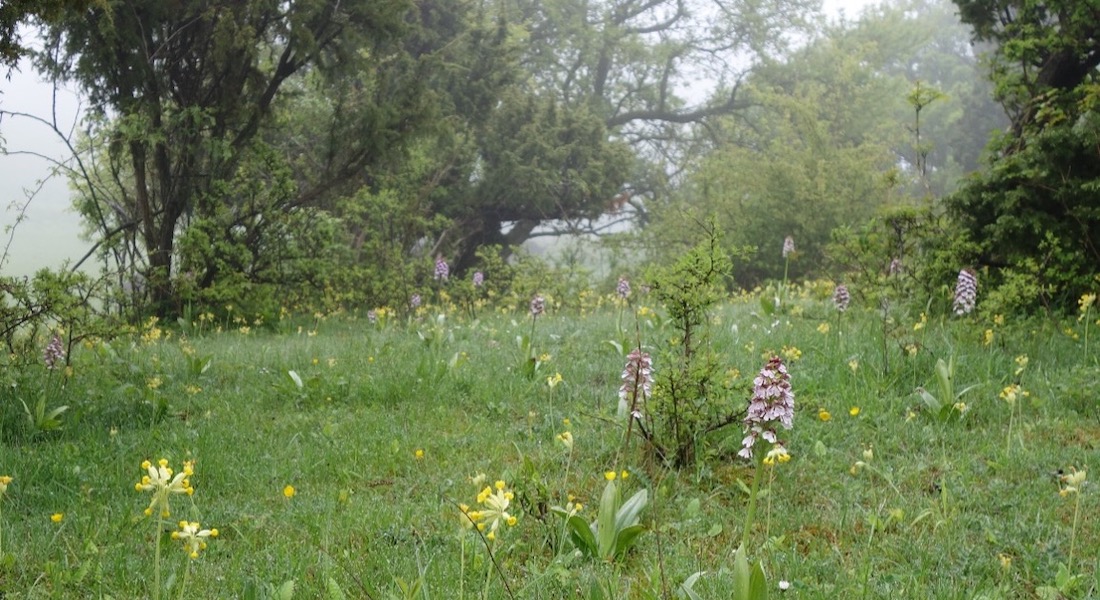Orchid study reveals essential plant-fungal relationships in Danish conservation area
In a new study conducted in a high-diversity conservation area in eastern Denmark, researchers have unveiled the intricate relationships between three co-occurring orchid species and their associated low-abundance mycorrhizal fungi in the soil. The study sheds light on the significance of understanding these plant-fungal interactions for effective habitat management and conservation strategies.

There are around 35 species of orchids in Denmark all of which are protected. They can be found in very diverse habitats from chalk grasslands to bogs. However, all species live in soil and depend on forming symbiotic relationships with specific mycorrhizal fungi, making them highly fragile to disturbances.
“All orchids form symbiotic relationships with specific mycorrhizal fungi, which they need for germination and growth. Orchids need to recruit the right fungi from their environment in order to be able to establish and maintain populations, but for most species we still don’t know which fungi they need.” says first author Assistant Professor Ida Hartvig from Center for Evolutionary Hologenomics at Globe Institute.
Plant-root microbiome relationships
The study focused on three terrestrial orchid species - Anacamptis pyramidalis, Orchis purpurea, and Platanthera chlorantha -found in a local orchid diversity hotspot at the isle of Møn. The researchers investigated the abundance and distribution of mycorrhizal fungi in the soil surrounding the orchids to gain insights into their ecological niche and potential implications for conservation efforts.
By looking at the root microbiome in these co-occurring Danish orchid species, the researchers found that each orchid species has a specific set of fungi it associates with. “It thus looks like using different fungi can help multiple orchid species co-exist in the same habitat, since they don’t need to compete for the same fungi. Moreover, these fungi appear to be extremely rare in the soil, and almost exclusively found where the orchids are – which underscores a tight link between orchid occurrence and presence of the right fungal partners in the soil. This tells us that the orchids are very specific in their requirements for a fungal partner, and it can help explain why orchid distribution is often very patchy.” Ida Hartvig explains.
Implications for conservation
As researchers are uncovering the many significant roles of the microbiome in the ecology and health of the plant host, know as plant hologenomics, it is becoming increasingly clear, that if we want to effectively protect and conserve wild plant species, we need to integrate knowledge about both the plants and their microbiomes. The plant microbiome includes bacteria, viruses and fungi associated with the plant and it is essential to understand how these are interlinked.
“More than half of Danish orchid species are experiencing decline, and we need a better understanding of their habitat requirements in order to reverse this loss and design better conservation plans. Knowing which fungal partners each orchid species need is the first step towards an integrative management approach that also considers what is needed for the fungi to thrive – as a habitat without the right fungi cannot support an orchid population.” Ida continues.
Promising perspectives
“We are currently growing these specific orchid fungi in the lab, and can now begin testing if inoculating newly restored grasslands with specific fungal partners can help orchids recolonise these habitats and establish healthy populations.” Ida ends.
These findings contribute significantly to our understanding of plant-fungal interactions and offer valuable insights for the conservation and management of orchid habitats, highlighting the need for further research in this field.
Read more in the open access publication in Ecology and Evolution here. The research is supported by the GB Hartmann Foundation.
Contact:
Assistant Professor Ida Hartvig
